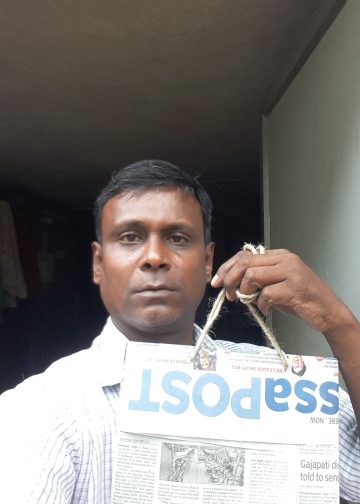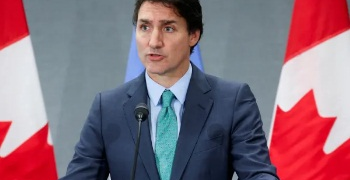FOCUS SOCIETY Proloy Bagchi
‘Happiness’ and ‘wellbeing’ of Indian masses do not yet figure in the lexicon of Indian administration
BLURB
According to the summary of the 2015 UN report, the world has come a long way since the first report was launched in 2012. It asserts: “Increasingly happiness is considered a proper measure of social progress and goal of public policy. A rapidly increasing number of national and local governments are using happiness data and research in their search for policies that could enable people to live better lives.”
TEXT
In the World Happiness Report 2015 of the United Nations on 158 countries, India has slipped from 111th place in 2013 to 117th. This, obviously, means that people in India have become unhappier during the last two years. The report covers the period from 2012 to 2014 and takes into account not just individual satisfaction and wealth but also broad contentment that includes social support, high healthy life expectancy, freedom to make life choices, perceptions of corruption, pro-sociality – the kind of conduct that may include honesty, benevolence, cooperation and trustworthiness.
With Switzerland expectedly topping the list, Nordic countries make up the top five. South Asia generally is in the bottom half and what is perhaps a reason for concern is that India has been ranked below Pakistan and Bangladesh – two countries that of late have been facing Islamic terror and yet their happiness quotient has turned out to be higher. Bhutan, which practises the concept of Gross National Happiness and inspired the study through the UN General Assembly, has been ranked 79th – higher than India, yet a not-too-high a rank, given the headstart it had in reckoning “happiness” (as against “product”) as a metric for growth and development.
According to the summary of the 2015 report, the world has come a long way since the first report was launched in 2012. It asserts: “Increasingly happiness is considered a proper measure of social progress and goal of public policy. A rapidly increasing number of national and local governments are using happiness data and research in their search for policies that could enable people to live better lives.”
We in India, however, are not aware of any move to collect “happiness” data at city, state or country levels to enable the administration frame policies to mitigate the general feelings of unhappiness and misery. If at all this has been done, apparently, the official organisations responsible for collection of such data have been doing so in a surreptitious manner. Not a word seemed to have been breathed to the media. That, of course, is another story and not material to this piece. What, however, needs to be pointed out is that over the last three or four years, the method of measurement of “happiness” has been refined. The 2012 UN report was based basically on the assessment of “happiness”, whereas the succeeding reports have, in addition, assessed the feelings of “wellbeing” among those who were surveyed.
“Wellbeing” is being measured in the UK and OECD countries and perhaps the measurement of “wellbeing”, especially “subjective wellbeing”, will be a true reflection of a people’s quality of life – as against the “gross domestic product”. We know how, during the years of high growth rates in the country’s GDP, the quality of life of vast numbers of people did not improve. Poverty, mal- and under-nourishment, and high infant and maternal mortality rates have continued to haunt the nation.
The report has been produced on the basis of some data that are already available with a few international organisations, and others were made available by Gallop World Poll (GWP) against eight constructs. (1) “GDP per capita” in terms of Purchasing Power Parity has been taken from World Development Indicators released by World Bank in 2014, (2) “Social Support” available for individuals is the national average of binary responses (of either 0 or 1) to GWP question, (3) data on “healthy life expectancy” has again been borrowed from World Health Organisation and World Development Indicators (4) “Freedom to make life choices” is again a national average of binary responses to the GWP question “Are you satisfied or dissatisfied with your freedom to choose what you do with your life”, (5) “Generosity” is the national average of the responses to the GWP question “whether you donated money in the past month”, (6) “Perceptions of corruption” are again the national average of binary responses to GWP poll to the question “whether corruption was widespread in the government and also within business” (7) “Positive effect” is defined as previous day’s measures of happiness, laughter and enjoyment” and (8) “Negative effect” is defined as the average of previous-day measures for worry, sadness and anger.
As of the eight above, GDP per capita in terms of Purchasing Power Parity (PPP) and figures on “healthy life expectancy” have been taken from relevant international organisations and there is some kind of finality about them since these are based on national data fed to them. Predictably, per capita GDP and healthy life expectancy are depressed and have apparently pulled the country down a few notches. Life expectancy was stated in January 2014 to have risen in cases of both the genders. But “healthy life expectancy” is quite another matter – given the state of environment, sanitation and health care in the country. A Google search failed to reveal India’s “Healthy Life Expectancy”.
Brief comments on each of the six constructs are as follows: Prevalence of “social support” is generally insignificant. It is the lucky few who are able to network and can expect support in times of physical or emotional distress. But indifference of the general public to distressed fellow humans is graphically exemplified by accident victims or molested females in public spaces in the country who are left to deal with their misfortunes themselves. Any kind of “social support” cannot be taken as a given in India like in more developed countries.
Similarly, the freedom to make “Life Choices” of a largely poor, illiterate/semi-literate and unskilled population residing in a country bereft of job opportunities has got to be restricted. And, if one does not have enough to live a dignified life how can he be expected to show “Generosity” by making donations? “Public and business corruption” cases have, of late, caught the attention of everyone. Almost every day, new cases of fraud of mindboggling amounts are revealed. When huge amounts of public money find their way into private pockets, the probability of “happiness” of vast numbers of people would necessarily recede. Besides, in rural or urban life, “negatives” top the “positives”. Barring a few financially well off, the masses, by and large, get back home harried and distressed after their daily struggle.
Though inspired by Bhutan which is trying to shun consumerism, the report is basically meant for economically advanced countries which, after becoming prosperous, are now looking for “happiness and wellbeing” of their peoples. In a populous country like India with illiterate/semiliterate or unskilled population that is generally engrossed in somehow making a living, such reports have, at best, only academic value.
Several countries reportedly are increasingly making use of these to fill the gaps in their respective systems to better quality of life of their peoples. Economic wellbeing enables them to study the problems, if any, and change gears if needed. In India, surely, nothing would be done on the basis of this report just as no action was, apparently, taken on the 2012 and 2013 reports. Placing the country at 117th position, therefore, seems very charitable. ‘Happiness’ and ‘wellbeing’ of the masses do not yet figure in the lexicon of Indian administration. —INFA






































